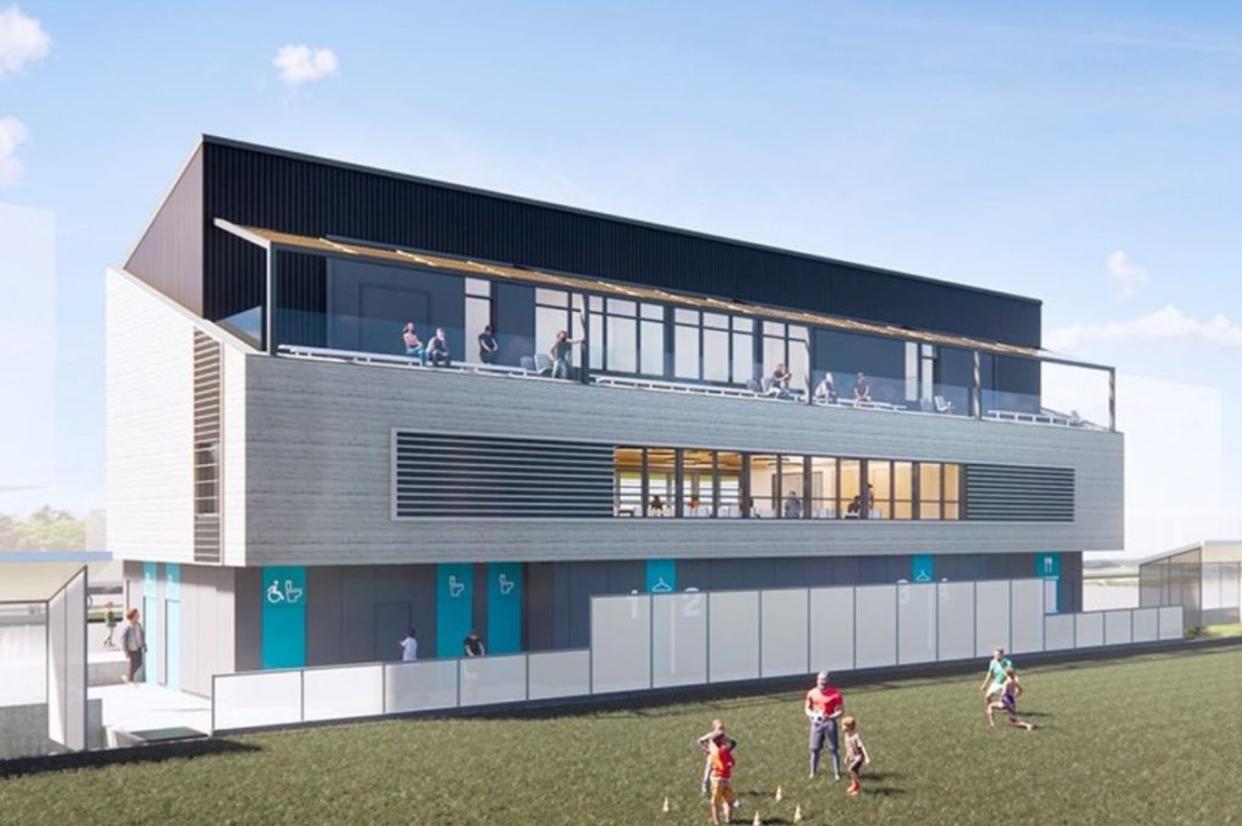Inlet Park’s new field house may cost up $8.3 million; construction expected to begin by early 2025

Construction of Inlet Park’s new field house, the final phase of the city’s redevelopment project, may cost up to $8.3 million.
The architectural phase of the three-storey, 8,650 square foot facility is now complete. Council directed staff to proceed to the construction design phase on June 25. Groundbreaking is expected to begin in early 2025.
“The whole Inlet Field redevelopment is really spectacular, and this field house is like a crown jewel,” said Coun. Amy Lubik. “The work that’s been done to make it accessible, sustainable, welcoming and usable by so many different community groups is just phenomenal.”
Redevelopment of Inlet Park’s outdoor fields wrapped up last Spring, and had a budget of approximately $8 million – more than half which was funded by the province.
The first two phases of the project built a FIFA-regulation soccer field, three smaller “Super 8” soccer pitches, two baseball diamonds, playgrounds, and a variety of other recreational and environmental features.
Inlet Park’s third phase is anticipated to be the most expensive. Port Moody considered building a smaller one- or two-floor facility early in the design phase, but feasibility studies showed there were cost efficiencies in building taller, according to staff.
And while its primary users will likely be Port Moody’s soccer and baseball crowd, the facility also includes amenities meant to serve the wider public.
Coun. Diana Dilworth said the sport-going community will be proud of the facility, but it can be used for meetings, weddings, parties, rotary gatherings and fundraisers. “This building is architecturally stunning,” she said.
The first floor includes four change rooms suitable for up to 25 players each, a concessions area, a universal dressing room, and showers.
The main feature of the second floor is a multi-purpose space, suitable for banquets and capable of serving 100 to 200 guests. It also houses a catering kitchen and bar, and indoor viewing space.
An outdoor viewing deck on the third floor will have covered bleachers able to hold 100 to 120 spectators, along with flexible office and meeting spaces inside.
There are five accessible gender-neutral bathrooms and storage space throughout the facility, and all three floors are serviced by an elevator.
Key considerations were given towards making the building energy efficient and accessible for all users, according to staff.
The city is aiming to have the building achieve several green and environmental certificates, as well as an accessibility certificate from the Rick Hansen Foundation.
Solar panels will be installed on the rooftop deck to generate renewable energy to help power the building, and other sustainable design elements including heating and cooling systems, construction materials, insulation, water-use reduction, and EV charging stations for 10 vehicles.
These features will lead to long-term savings on the cost of operating the building, according to staff.
Dilworth agreed, adding that seeking the highest certification standards will help the city meet its climate action and accessibility goals.
Staff said special attention was also given to have the building’s design match the aesthetic of growing residential development along Murray Street.
Coun. Callan Morrison acknowledged the design has gone through several iterations based on input from council, but the end result is a more user-friendly building. He praised its creativity, use of a smaller footprint, and versatility, noting “it will last an extremely long time.”
“I think it’s going to be a fantastic thing that we can say we were brought to this community and delivered on during this term,” Morrison said.
Patrick Penner, Local Journalism Initiative Reporter, Tri-Cities Dispatch


